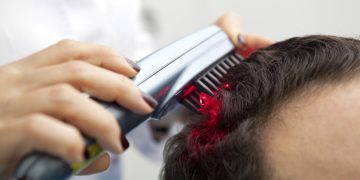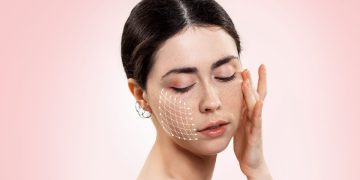In the ever-evolving world of skincare, trends come and go with the seasons. Yet, beneath the buzz of viral ingredients and complex routines lies a fundamental, non-negotiable truth: the health of your skin barrier dictates the success of every other product you use. Imagine your skincare routine as a beautifully constructed house. Serums, actives, and moisturizers are the furniture and decor, but the skin barrier is the foundation and the roof. If that structure is compromised, everything inside is vulnerable. This is the paradigm shift in modern dermatology: moving from aggressive correction to intelligent, foundational repair. But what exactly is this vital barrier, and how can we effectively fortify it?
The skin barrier, scientifically known as the stratum corneum, is not a passive wall. It is a dynamic, complex system often described as a “brick and mortar” structure. The skin cells (corneocytes) are the bricks, and the lipid matrix—composed of ceramides, cholesterol, and fatty acids—is the mortar. This structure is also home to a delicate ecosystem of microorganisms known as the skin microbiome. When this system is harmonious, the skin is resilient, hydrated, and radiant. When it is damaged, it leads to a cascade of issues including sensitivity, dehydration, inflammation, and accelerated aging. This article will explore the three pillars of modern barrier repair: the structural power of ceramides, the multi-tasking prowess of niacinamide, and the symbiotic support of microbiome care.
The Architectural Mortar: Ceramides as the Cornerstone of Repair
Ceramides are the undisputed stars of barrier repair. Making up over 50% of the skin’s lipid matrix, they are the primary “mortar” that holds our skin cells together, forming a water-tight seal to prevent transepidermal water loss (TEWL) and protect against environmental aggressors.
When the barrier is compromised, the first line of defense that is depleted is ceramides. This can happen due to over-exfoliation, harsh cleansers, environmental stressors, or even the natural aging process. The result is a leaky, vulnerable barrier. Think of it like a brick wall with crumbling mortar; moisture escapes easily, and irritants can penetrate freely, leading to a cycle of dryness and inflammation.
How Ceramides Work in Skincare:
Topically applied ceramides are not just moisturizers; they are signaling molecules and structural components. Advanced formulations use ceramides that are identical to those found in human skin (e.g., Ceramide NP, AP, EOP). When delivered effectively, they integrate into the stratum corneum, helping to rebuild the lipid layers from the inside out.
The key to their efficacy is delivery alongside their natural partners. Ceramides work synergistically with cholesterol and free fatty acids in an ideal ratio, often cited as a 3:1:1 molar ratio. Using a product that contains this “biomimetic” blend is far more effective than using ceramides alone. This is why medical-grade barrier repair creams are often more successful than simple lotions; they are formulated to mimic the skin’s natural composition, providing the exact building blocks needed for reconstruction.
The benefits of a ceramide-focused regimen are profound: a dramatic reduction in TEWL, improved skin resilience, diminished redness and reactivity, and a plumper, more hydrated complexion. It creates the stable base without which other active ingredients like retinoids and vitamin C can cause more harm than good.

The Multi-Tasking Regulator: Niacinamide’s Systemic Support
If ceramides are the architects rebuilding the structure, niacinamide (Vitamin B3) is the project manager overseeing the entire operation. This water-soluble vitamin is one of the most versatile and well-researched ingredients in skincare, and its role in barrier support is foundational.
Niacinamide operates on multiple fronts to reinforce the skin barrier:
- Boosting Ceramide Synthesis: This is its most direct role in barrier repair. Niacinamide has been clinically shown to increase the natural production of ceramides, as well as other key barrier lipids like free fatty acids and cholesterol, within the skin. It doesn’t just provide the bricks; it encourages your skin’s own workers to produce more of them.
- Strengthening the Skin’s “Glue”: It enhances the production of keratin, a key protein that makes up the skin cells (the “bricks” themselves), making them stronger and more durable.
- Calming Inflammation: A compromised barrier is almost always an inflamed barrier. Niacinamide is a potent anti-inflammatory agent, effectively reducing redness, blotchiness, and the inflammatory response that can perpetuate barrier damage. It helps break the cycle of irritation.
- Improving Surface Resilience: By supporting the barrier, niacinamide helps the skin better defend itself against environmental pollutants and oxidative stress. It also helps regulate sebum production, which can normalize the skin’s surface, benefiting both dry and oily skin types.
The efficacy of niacinamide is concentration-dependent. For general barrier support and calming, concentrations of 2-5% are ideal and well-tolerated by almost all skin types. Higher concentrations (10%) are often used for targeting hyperpigmentation and more pronounced oil control but may be irritating for some with a damaged barrier. Starting with a lower concentration in a gentle formula allows the skin to reap the stabilizing benefits without risk.
The Invisible Shield: Cultivating a Healthy Microbiome
The third, and most cutting-edge, pillar of barrier repair is the care of the skin’s microbiome. This is the diverse community of billions of bacteria, fungi, and viruses that live on our skin’s surface. Far from being harmful, a balanced microbiome is essential for a healthy barrier, acting as a first line of defense and a teacher for our immune system.
The relationship between the microbiome and the skin barrier is symbiotic. A strong, intact barrier provides a healthy environment for good bacteria to thrive. In return, a balanced microbiome:
- Fights Pathogens: Beneficial bacteria compete with harmful ones for space and resources, preventing “bad” bacteria from overpopulating and causing infection or inflammation.
- Trains the Immune System: It communicates with the skin’s immune cells, teaching them to distinguish between friend and foe, which helps prevent unnecessary inflammatory responses to harmless substances.
- Produces Beneficial Metabolites: Some beneficial bacteria produce their own antimicrobial peptides and even fatty acids that contribute to the skin’s acidic pH and overall health.
Modern Microbiome Care:
“Microbiome-friendly” skincare is about supporting this invisible ecosystem, not sterilizing it. The strategies include:
- Avoiding Harsh Surfactants: Sulfates and other aggressive cleansers can strip the skin of its natural oils and decimate the microbial community. Opting for gentle, pH-balanced cleansers is crucial.
- Incorporating Prebiotics and Postbiotics: Skincare is now incorporating prebiotics (ingredients that act as food for beneficial bacteria, like galactoarabinan) and postbiotics (inactive good bacteria or their fermentation byproducts). These ingredients help to nourish and support the existing microbiome, encouraging its natural balance.
- Using Fermented Ingredients: Products like galactomyces and bifida ferment lysate are rich in nutrients, antioxidants, and peptides that calm the skin and support the barrier, creating a better environment for the microbiome.
Disrupting the microbiome with harsh products can lead to dysbiosis (an imbalance), which is linked to conditions like eczema, rosacea, and acne. Therefore, a holistic barrier repair strategy must include practices that protect and nurture this invisible, yet vital, ecosystem.
Conclusion: The Unshakeable Foundation of Radiant Skin
The pursuit of perfect skin will always be filled with new ingredients and technologies. However, the most significant advancement in skincare in recent years is the renewed understanding that everything begins and ends with a healthy barrier. Chasing results with potent actives on a compromised foundation is like building a mansion on sand—it is destined to collapse.
A strategic focus on barrier repair, powered by the structural reinforcement of ceramides, the multi-tasking regulation of niacinamide, and the symbiotic support of microbiome care, is not a passive or boring approach. It is the most active step you can take toward long-term skin health. By investing in this foundation, you create a resilient, balanced, and receptive canvas. This is the real secret to unlocking the true potential of your entire skincare regimen, ensuring that your skin is not just temporarily improved, but fundamentally transformed.












































